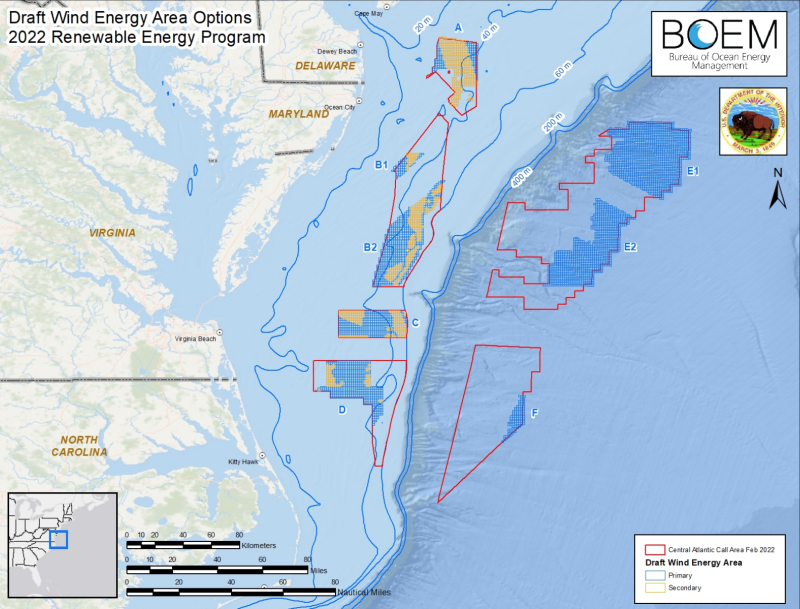Maryland Gov. Wes Moore on Friday signed a package of energy legislation to boost the state’s offshore wind goals and speed adoption of electric vehicles.
Moore signed the bills at Tradepoint Atlantic in Baltimore, under development as a supply hub for wind developers Ørsted and U.S. Wind. Among those measures is the Promoting Offshore Wind Energy Resources (POWER) Act of 2023, passed by state legislators April 10.
The law aims to quadruple Maryland’s offshore wind generation goals from about 2 gigawatts to 8.5 GW by 2031, improve transmission infrastructure, and provide a clear path to future offshore wind energy procurements.
“Because of the work happening today at Tradepoint Atlantic, Maryland is on track to become the offshore wind capital of America; it’s happening through this partnership with Ørsted, which is going to capture enough wind to power 300,000 homes, create 125 good-paying union jobs, and build a cleaner and greener world,” Moore said of the bill signing.
The Moore administration says offshore wind projects now planned “will provide power for nearly 300,000 homes, which will greatly help the state achieve its goals of 8.5 GW of offshore wind energy by 2031 and 100 percent clean energy by 2035.”
Moving those goalposts puts Maryland on a footing like New York and New Jersey with their ambitious goals. In addition to raising Maryland’s overall offshore wind goal, the law requires a new transmission study to guide how the state incorporates the new power into its energy grid and requires a solicitation for a planned transmission buildout.
“Governor Moore and the Maryland General Assembly’s monumental vision is now Maryland law and we’re hitting the ground running to help achieve its clean energy goals,” said Jeff Grybowski, CEO of US Wind. “With the backing of the POWER Act, Maryland is on a clear track to lead the nation in offshore wind manufacturing, jobs and energy generation that will benefit our state for decades to come.”
US Wind is owned by Renexia S.p.A., a leader in renewable energy development in Italy and a subsidiary of Toto Holding S.p.A., and Apollo Global Management. The company says its plans to establish Maryland’s first permanent offshore wind component factory at Sparrows Point Steel will “serve the entire U.S. market and secure a major role for the state in the rapidly growing U.S. offshore wind industry.”
Maryland’s new moves harken back to the leading role it sought when federal offshore wind planning began to pick up the pace during the Obama administration.
“Today, Maryland reinserts itself into the offshore wind conversation. A decade ago, Maryland sat at the forefront of the U.S. offshore wind industry with passage of groundbreaking legislation, but the ensuing years have seen neighboring states pull ahead with bolder commitments and energy,” said Liz Burdock, executive director of the industry non-profit Business Network for Offshore Wind.
“The POWER Act repositions Maryland back into a leadership position and, with the federal government opening up new lease areas next year, offers the state a rare opportunity to attract major manufacturing and supply chain investment. Maryland must capitalize on this opportunity by moving quickly from legislation to execution and commercialization.”




